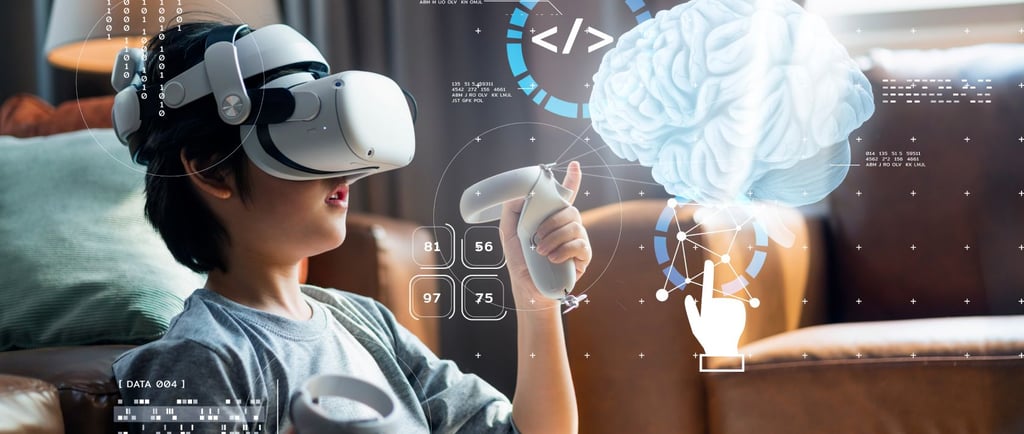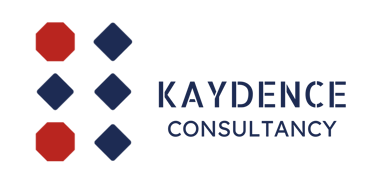Kaydence partners with the CSH to drive innovative solutions in education and healthcare.
Applications of augmented reality in education and training
Augmented Reality (AR) is revolutionizing education and training by creating immersive, interactive, and engaging learning experiences. This blog explores how AR enhances classroom education, STEM learning, medical training, corporate onboarding, and industrial simulations. From virtual experiments and historical recreations to real-time guidance in aviation and healthcare, AR is bridging the gap between theory and practice. Discover the benefits, applications, and future potential of AR in transforming learning and professional training.
RESEARCH
2/8/20252 min read


Augmented Reality (AR) is revolutionizing the way we learn and train by integrating digital elements into the real world. From immersive classrooms to hands-on industrial training, AR enhances engagement, improves retention, and offers interactive experiences that traditional methods cannot match. This blog explores the diverse applications of AR in education and training, its benefits, and its impact on the future of learning.
How Augmented Reality is Transforming Education
AR is reshaping traditional education by making learning more interactive, engaging, and effective. Some key applications include:
1. Interactive Learning Materials
AR-powered textbooks and workbooks bring static images to life with 3D animations and explanations.
Students can scan pages using AR-enabled apps to view interactive models of human anatomy, historical landmarks, or chemical reactions.
2. Virtual Classrooms & Remote Learning
AR creates immersive virtual environments where students can interact with subjects in real-time, regardless of location.
Teachers use AR to illustrate complex topics like physics simulations, space exploration, and biological processes.
3. STEM Education & Practical Experiments
AR enhances science, technology, engineering, and mathematics (STEM) education by enabling students to conduct virtual experiments without safety risks.
AR apps provide 3D models of molecules, electrical circuits, and engineering structures for better understanding.
4. History & Cultural Exploration
Students can explore historical events, artifacts, and ancient civilizations through AR overlays in museums or classrooms.
AR-guided tours bring history to life by allowing students to witness virtual recreations of historical sites and events.
5. Language Learning & Communication Skills
AR-based language learning apps provide real-world context and immersive conversations to enhance vocabulary and pronunciation.
Virtual speech trainers help students practice public speaking and presentation skills with real-time feedback.
Applications of AR in Professional & Industrial Training
Beyond classrooms, AR is redefining training methods in various industries by providing hands-on, real-time guidance. Some of the key applications include:
1. Medical & Healthcare Training
AR enables medical students and surgeons to visualize human anatomy, simulate surgeries, and practice procedures with precision.
AR-guided diagnostic tools help healthcare professionals improve patient care and treatment accuracy.
2. Military & Defense Training
AR-based simulations train soldiers in battlefield scenarios, equipment handling, and strategy planning.
Real-time AR overlays provide situational awareness and tactical training for enhanced decision-making.
3. Aviation & Aerospace Training
Pilots use AR-powered flight simulators to practice navigation, emergency handling, and aircraft controls.
AR enhances space exploration training by simulating zero-gravity environments and spacecraft operations.
4. Engineering & Manufacturing
AR assists engineers and technicians in assembly, maintenance, and quality control by overlaying digital instructions onto real-world objects.
Industrial workers use AR glasses for real-time troubleshooting and repairs to reduce errors and downtime.
5. Corporate Training & Employee Onboarding
AR enhances corporate training by creating interactive learning modules for employees in fields like customer service, sales, and management.
AR-driven onboarding programs help new employees quickly adapt to workplace environments and tools.
Benefits of Augmented Reality in Education & Training
✅ Enhanced Engagement: AR makes learning more interactive and immersive, keeping learners motivated.
✅ Better Retention & Understanding: Visualization of complex concepts improves comprehension and memory retention.
✅ Risk-Free Training: AR simulations allow students and professionals to practice in a safe environment before applying skills in real life.
✅ Accessibility & Inclusivity: AR supports remote learning and assists students with disabilities through customized learning experiences.
✅ Cost-Effective: Reduces the need for physical training materials and equipment, saving resources for institutions and businesses.
Conclusion
Augmented Reality is transforming education and training by bridging the gap between theory and practice. From classrooms to corporate offices, AR is making learning more engaging, interactive, and effective. As technology continues to evolve, AR will play a crucial role in shaping the future of education, empowering learners, and improving training outcomes across various industries.
Kaydence Consultancy
Global platform for study abroad solutions, marketing strategy and your efficient research partner
Contact
Get in touch
director@kaydenceconsultancy.com
+9188916082
© 2025 Kaydence Consultancy. All rights reserved.
Designed with care | Powered by Innovation
Navigation
Company
Career
Legal
M G Road, Kochi, Kerala, India
